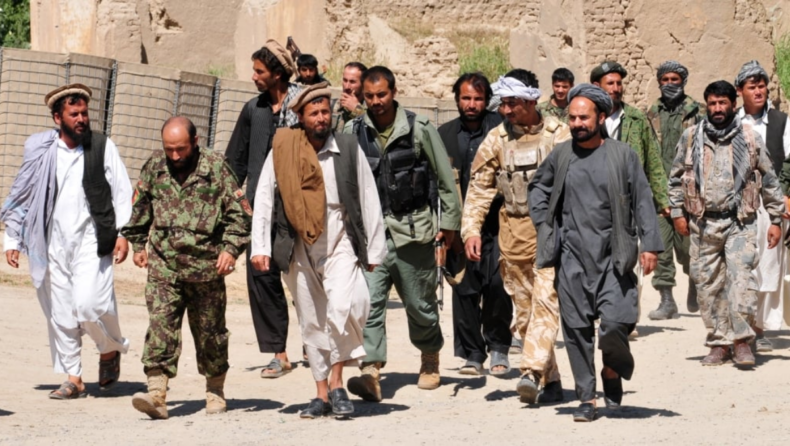
Pakistan and Taliban in Afghanistan are on the verge of a huge conflict. The Taliban have rejected Pakistan, its principal state supporter during the fight against the US forces. And also, overthrown Afghan government, after taking control. It has done so by challenging the Pak-Afghanistan border’s status and providing a safe haven for the anti-Pakistan insurgent group Tehreek-e-Taliban Pakistan (TTP).
TTP also known as the Pakistani Taliban. It has killed dozens of Pakistani’s and seeks to establish a Taliban-style, Shariah-compliant state in Pakistan. This has taken Islamabad by surprise, as it had assumed that the Taliban would be obligated to it in exchange for years of support.
Tensions have risen in the eight months since the Taliban took control over Afghanistan. Thus, owing to the TTP’s increasing attacks on Pakistani security forces. Pakistan carried out coordinated airstrikes inside Afghanistan on suspected TTP targets on April 21, in a major escalation that killed civilians.
Why Did Pakistan Decide to Launch Airstrikes?
The use of cross-border airstrikes by Pakistan is linked to the TTP’s trajectory in Afghanistan and Pakistani leadership’s rising displeasure with the Taliban’s failure to rein in the TTP. The TTP has increased its bases in Afghanistan to target Pakistan since its revival a few years ago. Particularly in places where the Taliban’s territorial dominance as an insurgency was significant.
The Taliban granted the TTP de facto political refuge after seizing power in Afghanistan. The TTP has taken advantage of its enhanced political standing in Afghanistan. In order to increase cross-border attacks and is currently deploying fighters into Pakistan on a daily basis.
The TTP began the “Al-Badr” spring offensive in April. It was the most serious rebel assault on Pakistan in the recent years. Pakistan’s decision to deploy fighter jets was prompted by a month-on-month increase in violence and a rising lack of security.
Pakistani military commanders appear to understand that their military action in Afghanistan is unpopular among Afghans. They may have hoped that the strikes would put pressure on the Taliban to reverse policies. Thus, allowing Pakistan to undermine their domestic political standing. At the very least, the strikes would sever TTP-Taliban ties and force Taliban idealists to think about the cost of their support for the TTP.
However, Pakistan may have overplayed its hand: at least 20 children and other civilians were killed in the strikes.
Policy Reactions in Pakistan
Pakistan’s decision to utilize airstrikes rather than secret action demonstrates that the country wants to send a public message to the Taliban. The targeting capacity is still rudimentary, limiting its utility and, given the potential for human injury. It may even be counterproductive. More assaults that kill civilians could provoke a Taliban reprisal, as well as generate more TTP recruits.
The Taliban appear to be pressuring Pakistani politicians to engage in peace talks with the TTP. Prime Minister Shehbaz Sharif’s new coalition administration may be persuaded to restart discussions in order to keep violence at bay and focus on the economy.
There is no evidence that Pakistan is prepared to confront the Taliban. This could be due to a lack of ideological will to see the Taliban as the most effective alternative to alleged Indian influence in Afghanistan. It could also be due to a lack of a viable political alternative to the Taliban to support.
Pakistan might try to control the Taliban’s internal politics by marginalizing Taliban commanders who are more pro-TTP. It may attempt to retaliate against the Taliban leadership’s families as well as their remaining assets in Pakistan.
Policy implications for the United States
The US counterterrorism resources are limited, and Pakistan’s self-inflicted crisis is not the US government’s fault. However, the political and security situation in Afghanistan and Pakistan in general might be used to define US national security interests. The relationship between the Taliban and Pakistan, as well as the rising terrorist bloodshed in Pakistan, should be closely monitored by Washington. In Pakistan, policymakers should also establish clear criteria for the level and nature of terrorist activities.
The US government has made no comment on the Pakistani airstrikes. But it should closely examine Pakistan’s air-targeting procedures to avoid civilian casualties. This can be accomplished through bilateral military-to-military channels that already exist.
If Pakistani airstrikes continue to injure civilians on this scale, it would not only be a violation of the law of armed conflict, but also radicalize residents in the targeted area. This could backfire in terms of reducing terrorist risks in the region.
Furthermore, if Pakistan’s cross-border targeting is based on US technology, Pakistan may be in violation of end-user limits on US government-supplied equipment. Hence, it will normally demand adherence to international humanitarian law.













